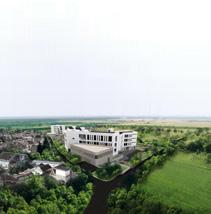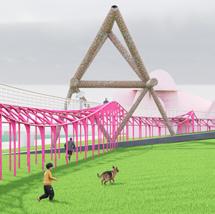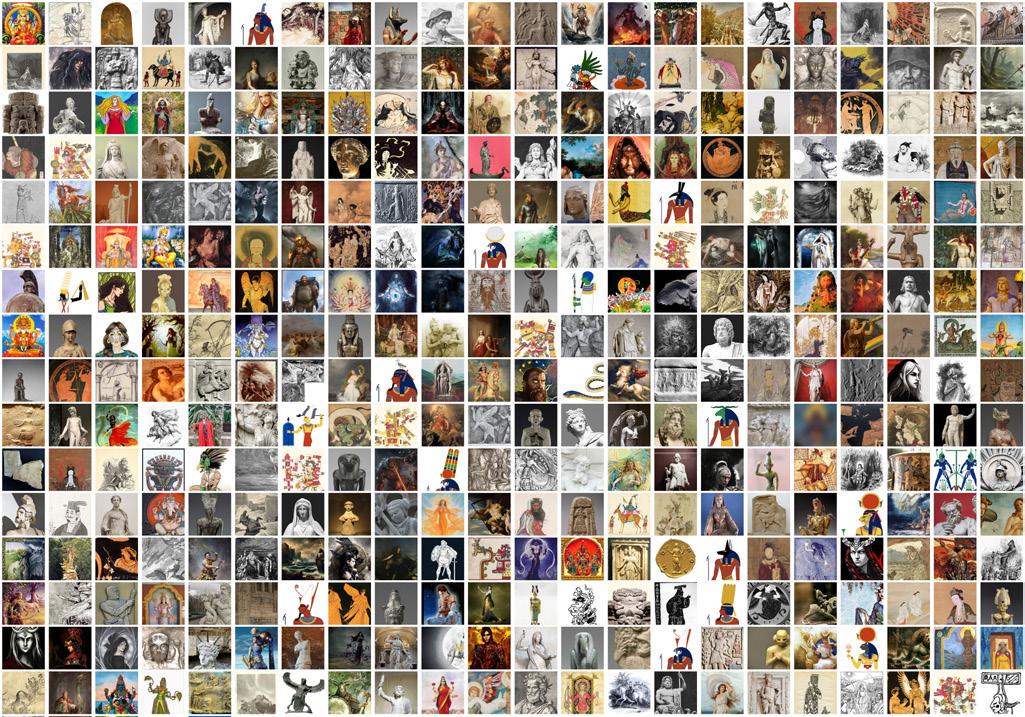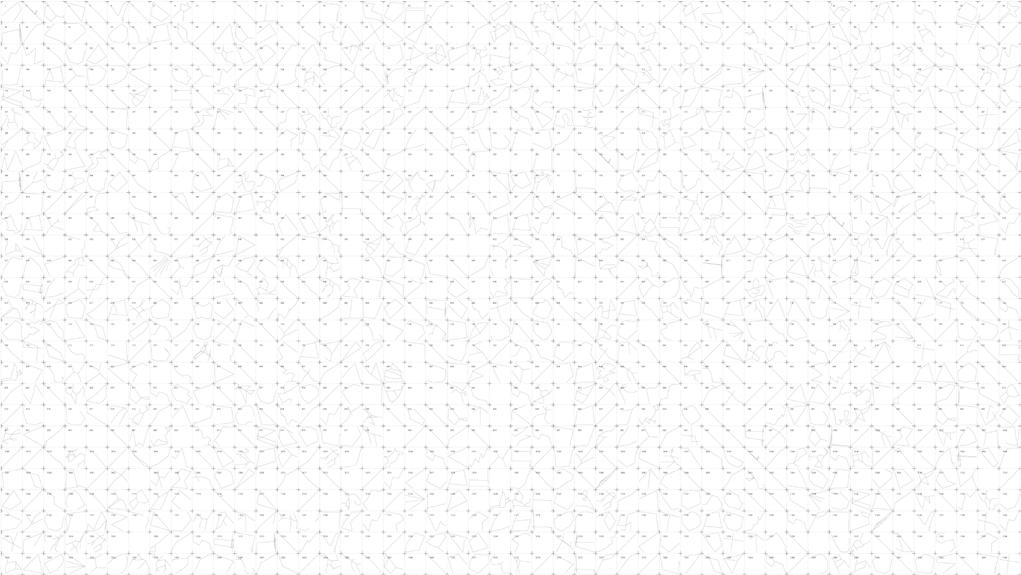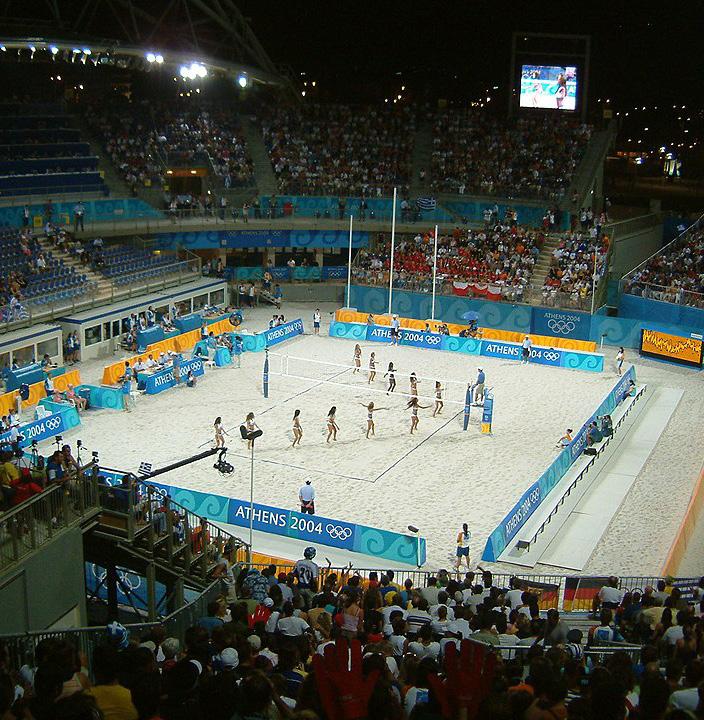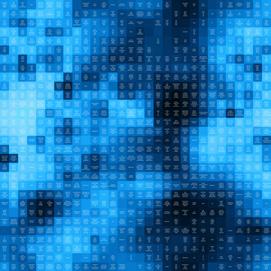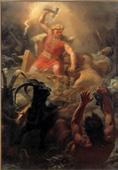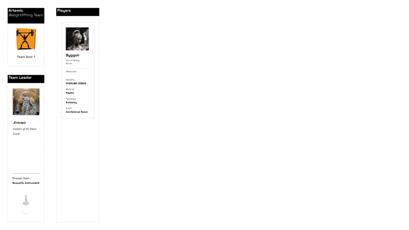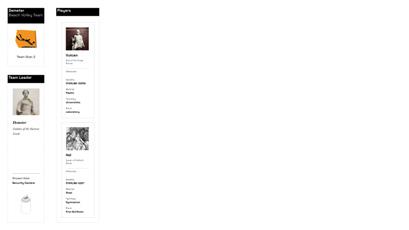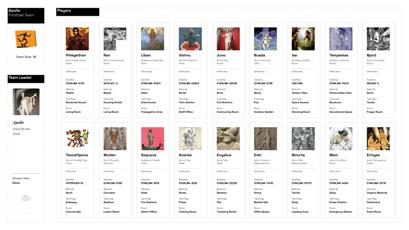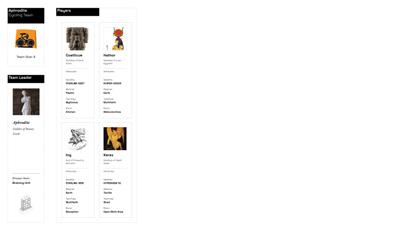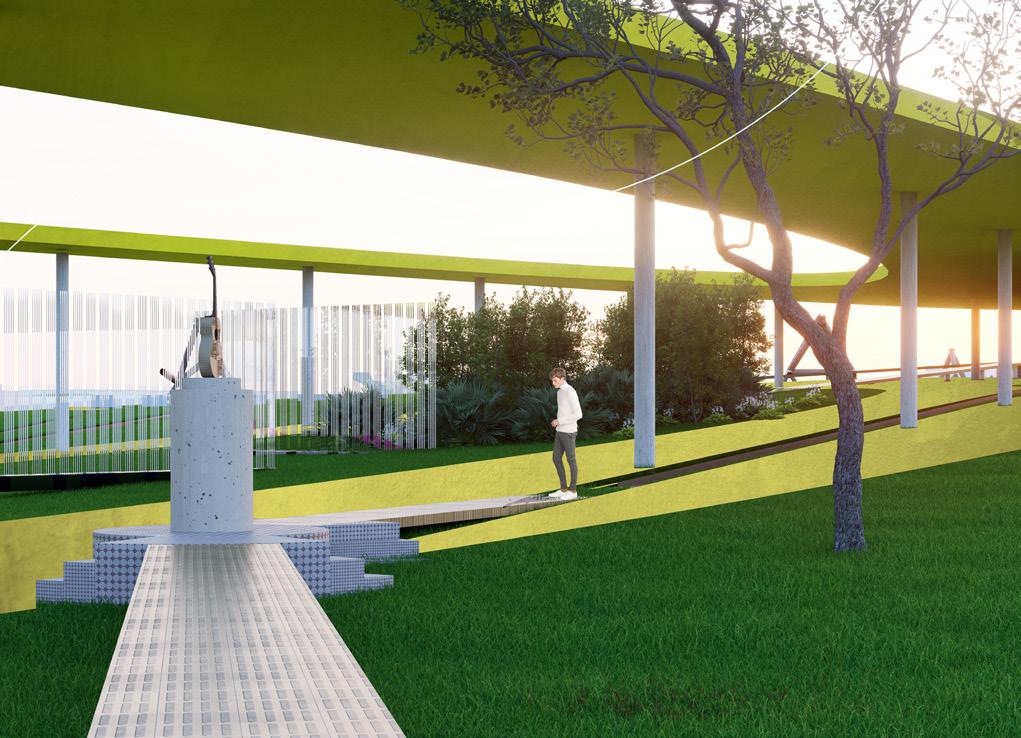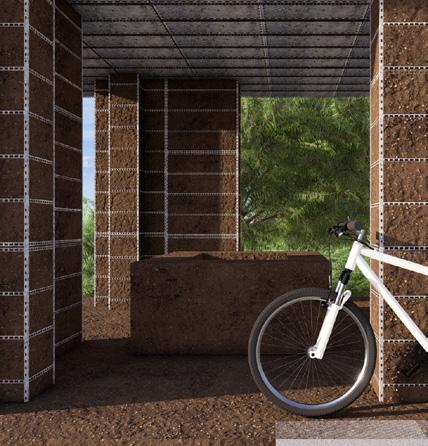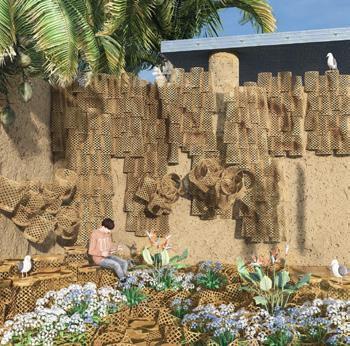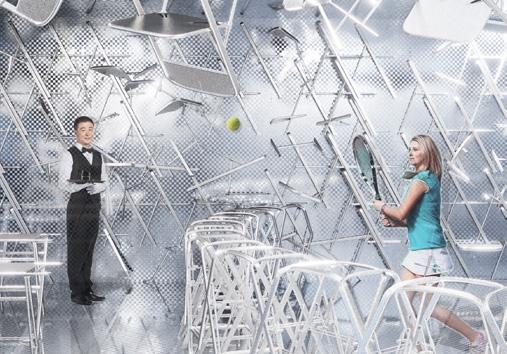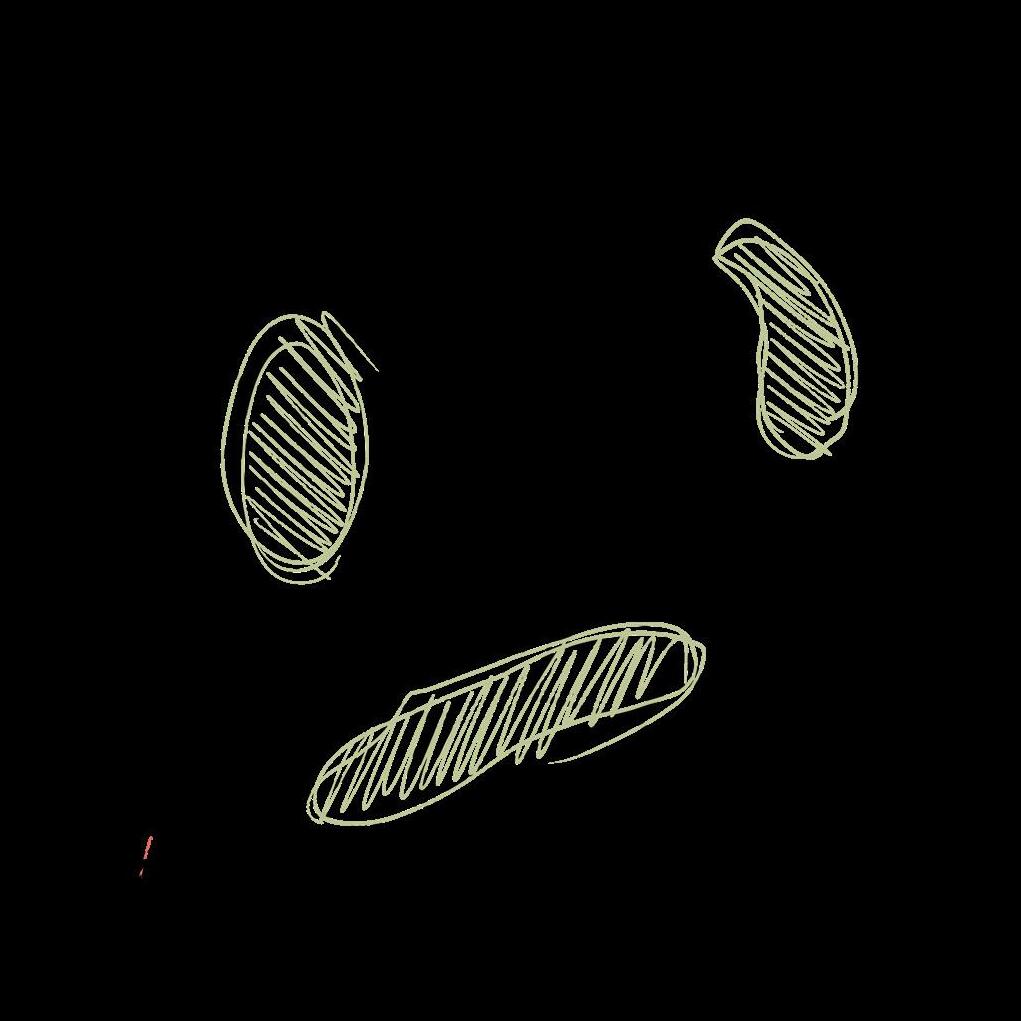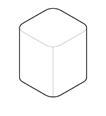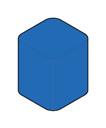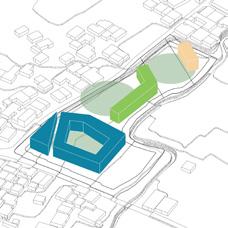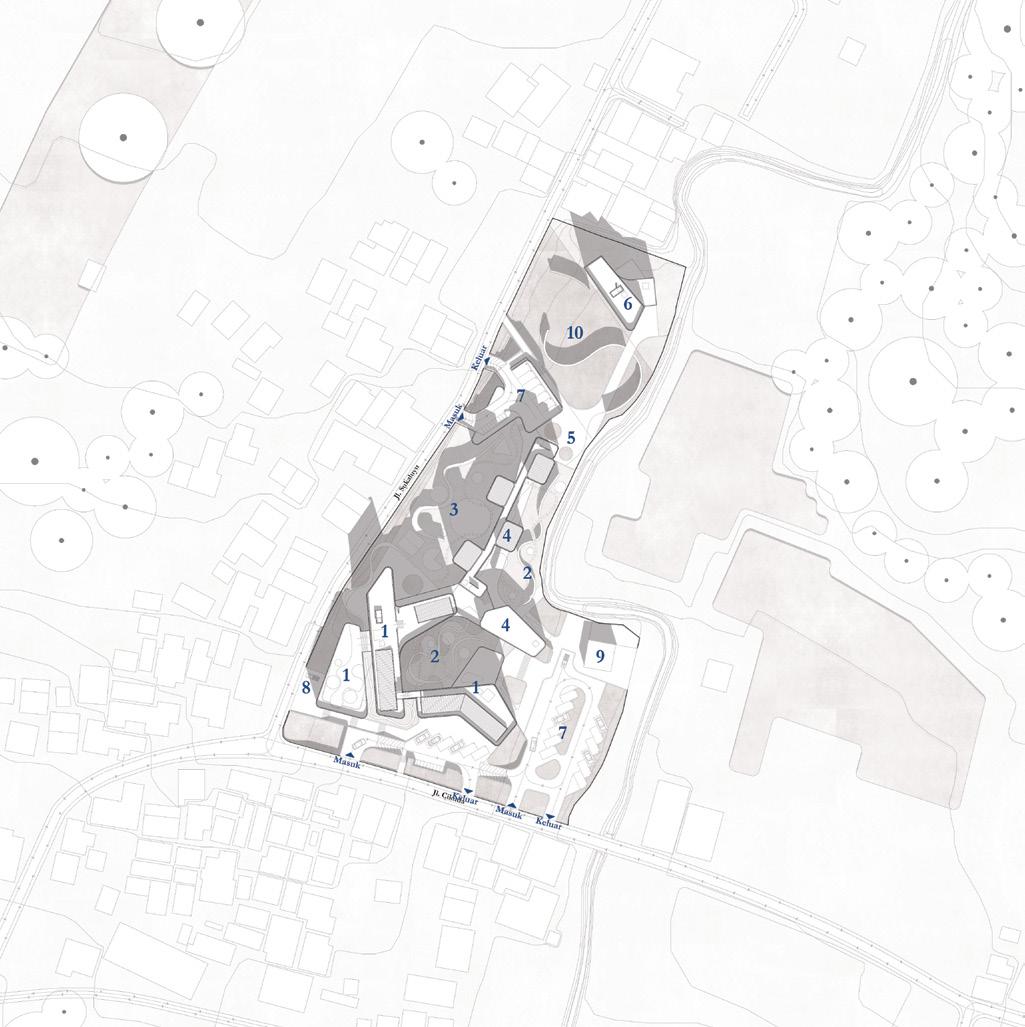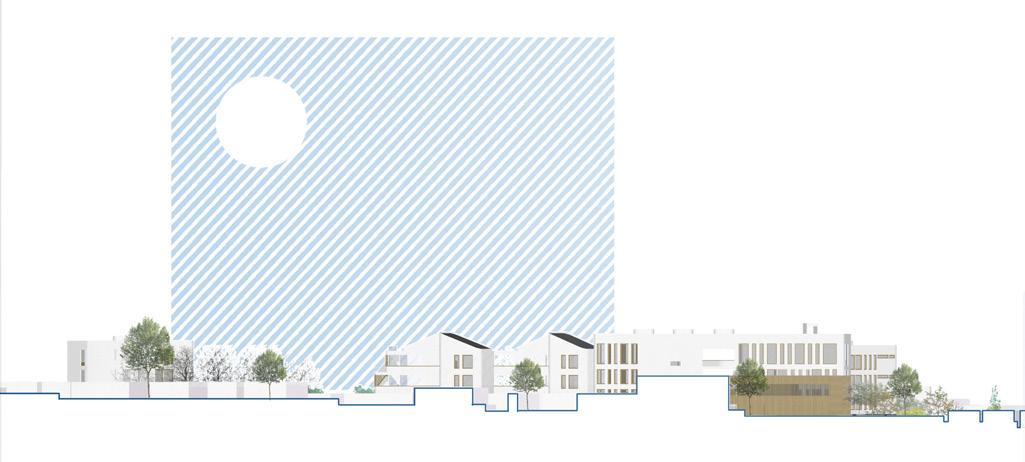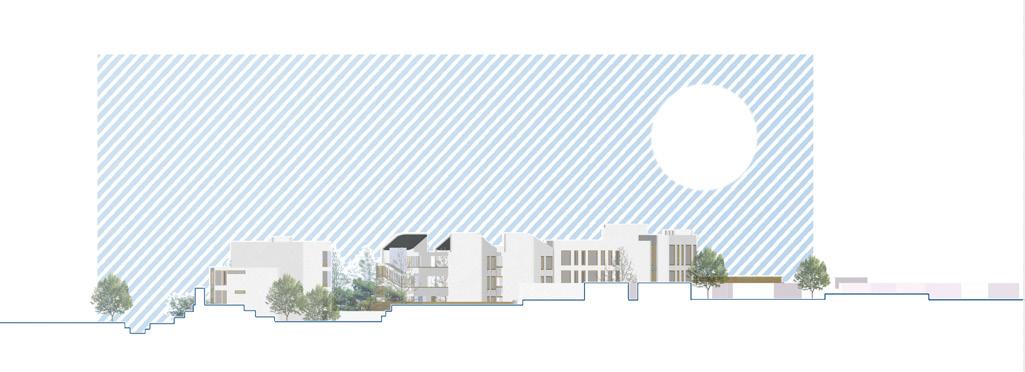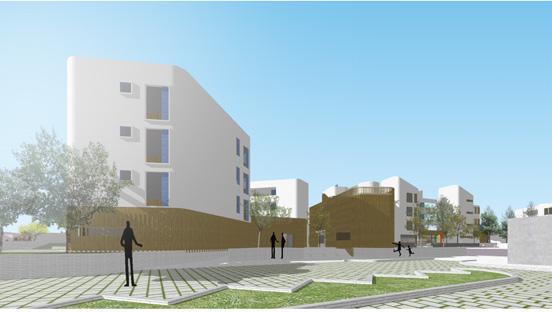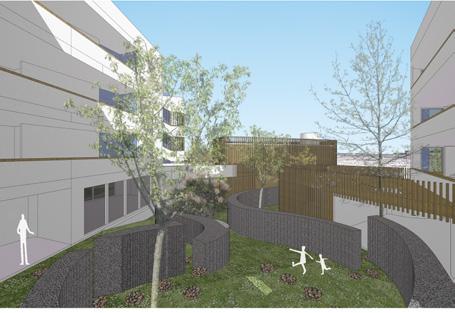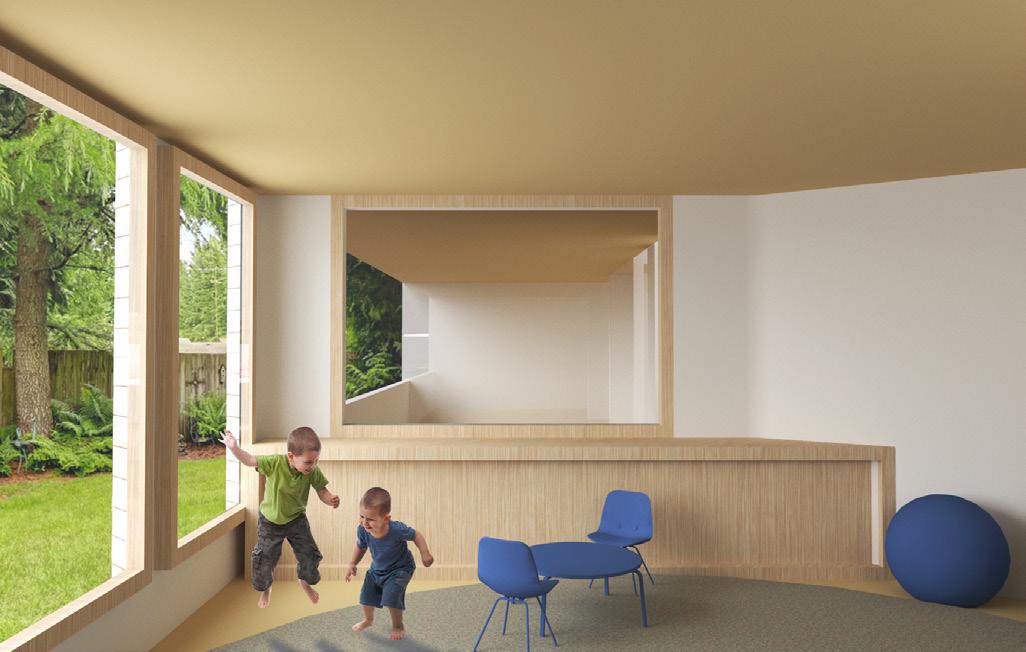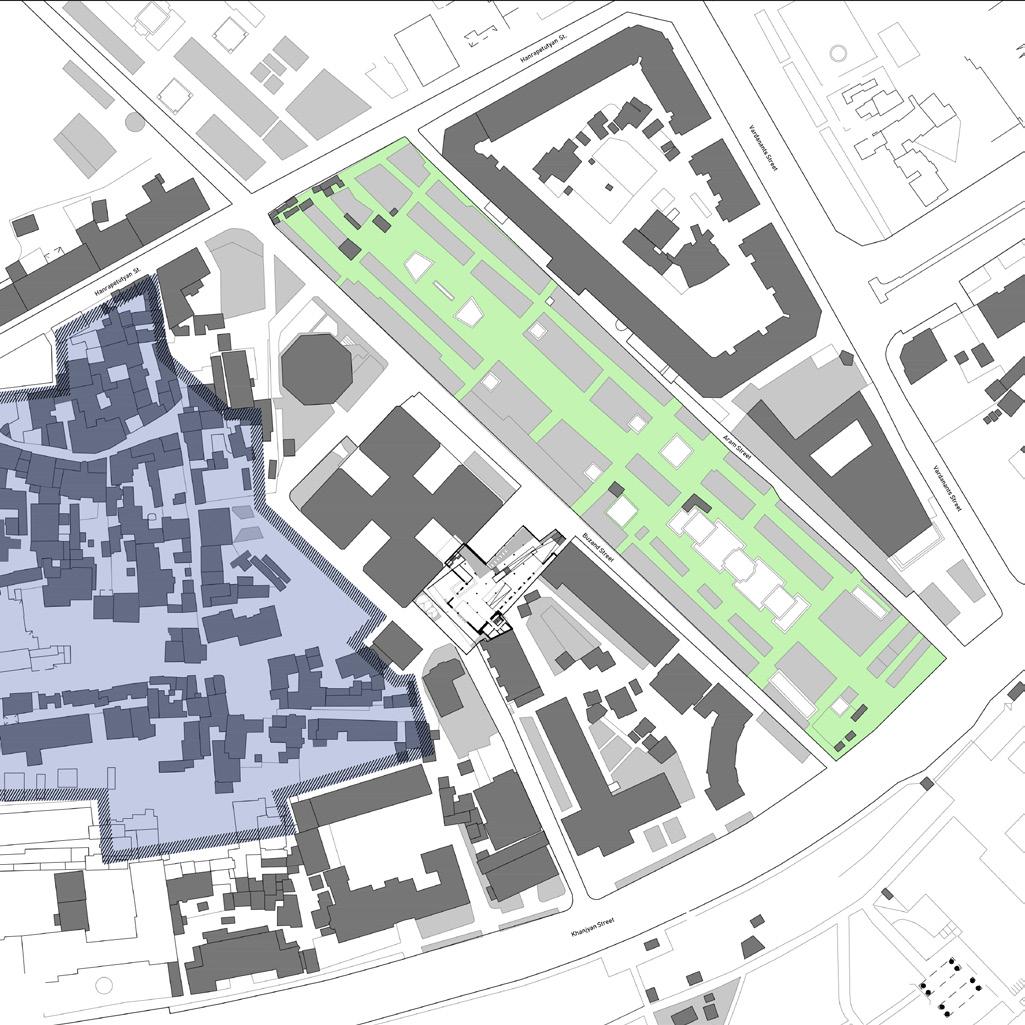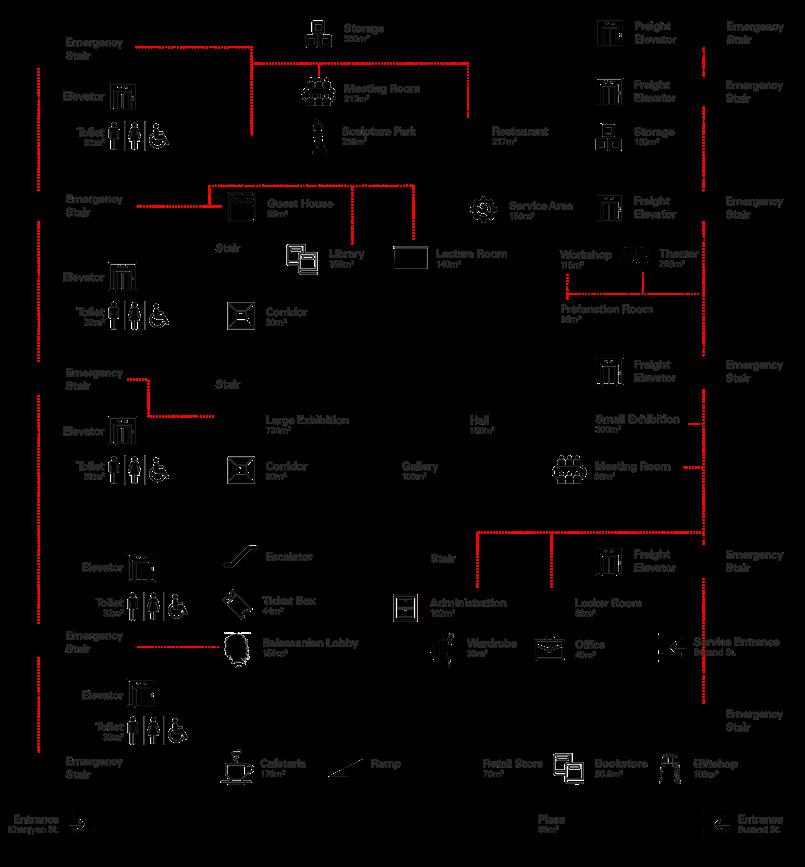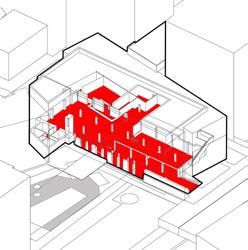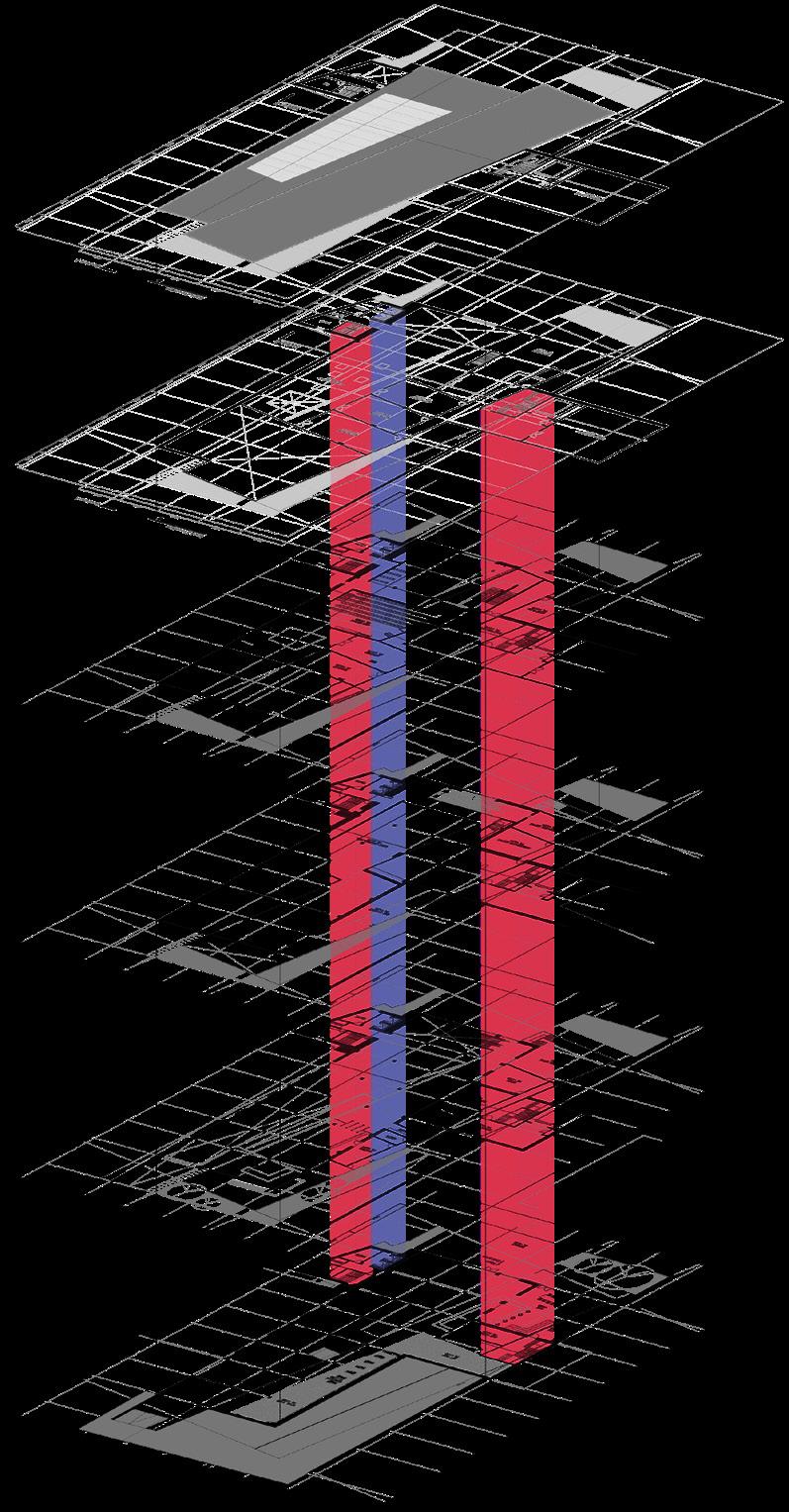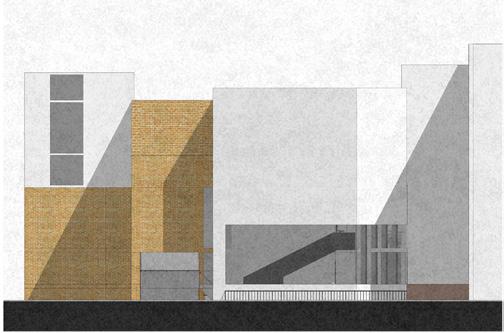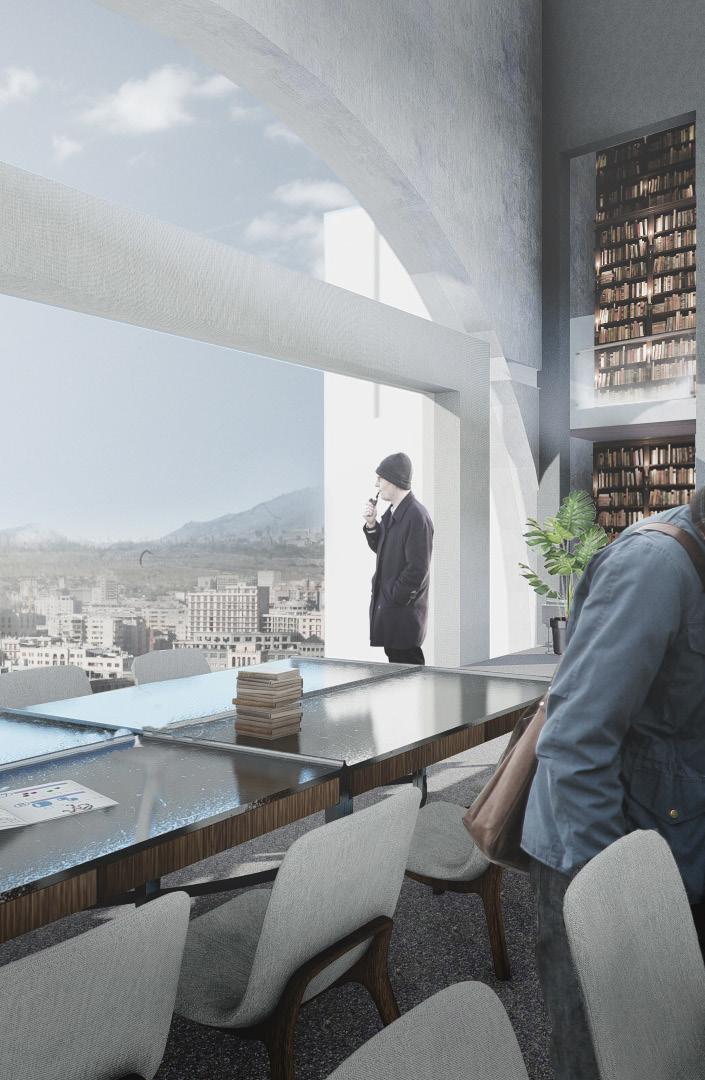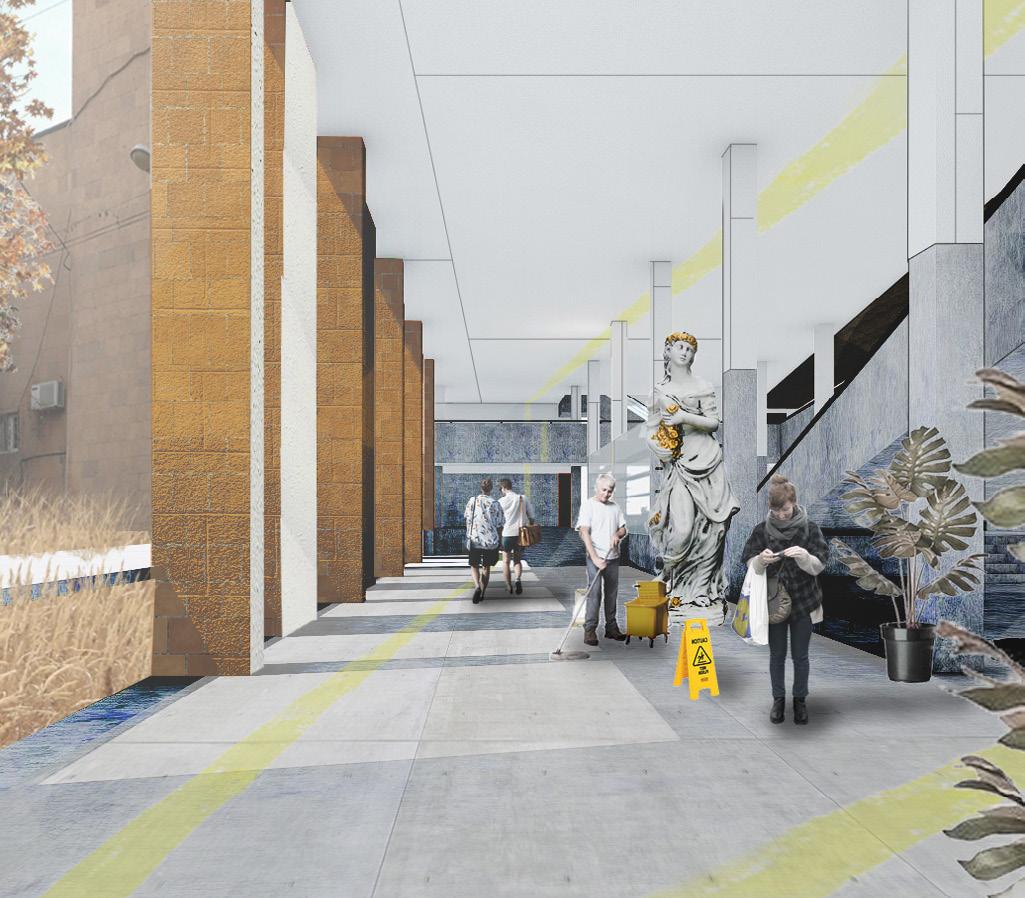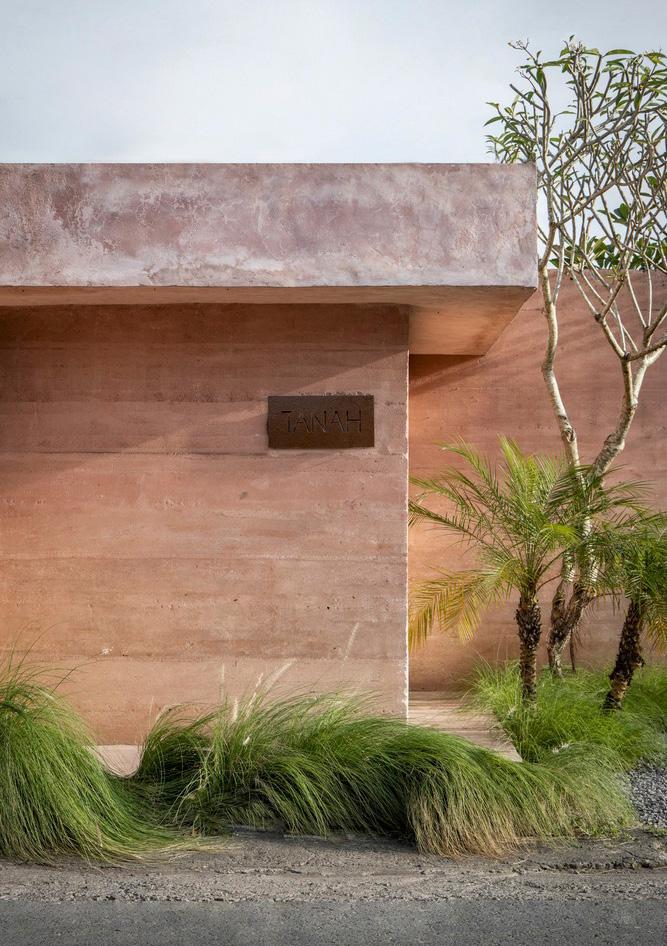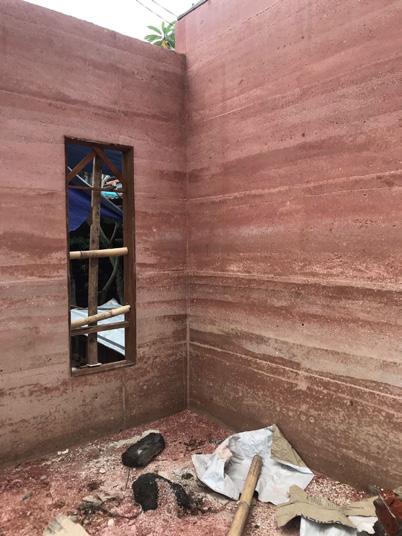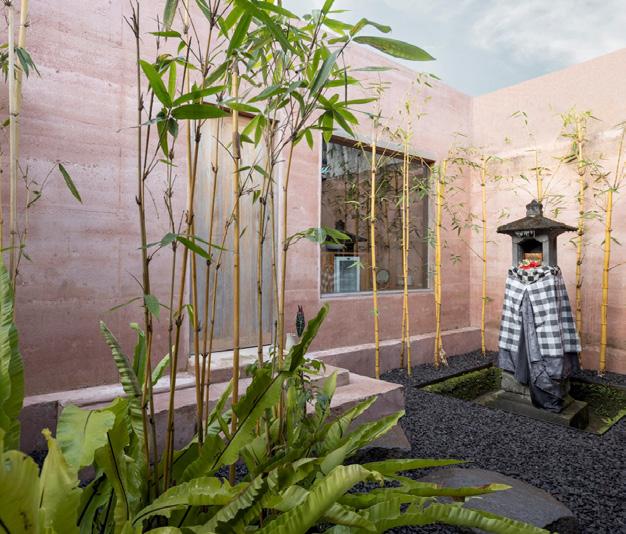01 Playground of the Olympus
Reimagined Olympic Park
Mixed-Use | 18ha | Athens, Greece | Student Work | 2025
Mentor: Andrew Porter, Julian Besems
Developed under the theme of Commodification, this project advances a manifesto: cultures make cities both familiar and distinct from one another. Cultures leave deliberate inscriptions, here defined as symbols, not mere names or logos but representations of larger ideas. These symbols, like architecture, evolve over time through exchange and shifts in trends. Rather than disappearing, they resymbolize an enduring essence. The project follows this framework, examining symbols as design agents that evolve, persist, and invite reimagining.
The design employs machine learning as a creative instrument to reinterpret mythological data and explore how divine archetypes can inform spatial form. Three datasets: the divines, the rituals, and the olympics, structure the design process. The divines act as symbolic agents, curating the rituals dataset and reimagining the project through the performative framework of the Olympics dataset. Together they generate a speculative narrative in which the gods return to rehost the Olympics within the abandoned Faliro Stadium in Athens. Once a site of commodified spectacle, the stadium becomes a celestial pavilion park where ritual, myth, and data converge to question how architecture can embody the evolving nature of belief, memory, and meaning.
Deities and the Divine Datasets
The first dataset comprises 357 deities collected from 34 cultures around the world. It also includes 1,928 entries from mythologythemed sources and 1,270 constellations associated with those same cultures.
Satellites and the Ritual Datasets
The second dataset maps the material counterparts of temples, ritual oblations, and constellations, comprising 45 architectural typologies linked to 450 essential rooms, alongside 4,500 daily life items, 11,627 active satellites, and 16 architectural materials.
Faliro Coastal Stadium , Athens (2017)
Photograph by Thanassis Stavrakis
Theistic Machine
From a corpus of 1,928 mythology sources, the project applies natural language processing to model deity recognition. Using term frequency–inverse document frequency (TF-IDF), the system extracts the top ten keywords that most strongly characterize each deity, yielding semantically representative descriptors grounded in the literature.



“thought stranger goodly form full though without trace age massive brow kindly mouth expression far seeing wisdom”, “tongue fell upon ear like music grieved flow wa interrupted question directly”, “wherefore day dear maiden winning voice manner must know better ere tale gain credence thee”, “language god seem understood thee alone foe ha profane crowd thou didst speak alone thou mountain”, “think thou wilt one fallen cloud strange man returned maiden homer speech homer self hear tale ere require thine”, “temple ruin prayer wa longer sacrifice made old priestly revenue sacred vessel carried away voice oracle dumb divine tongue wa forgotten scroll wisdom unread people turned human mechanic fisherman”, “one faithful servant father ti seven day since closed eye ever”, “said gazing sky eye could pierce voice reach beyond drifting cloud”,
Gods Curation
After the model recognizes the gods, the project leverages them as design agents, using Contrastive Language–Image Pre-training (CLIP) to curate preferences across architectural typologies, rooms, objects, sports, and materials.
Keywords Sample
Keywords: giant, hammer, rainbow, stress, brown, fly, ceiling, subsequent, pathetic, drag
CLIP model = “ViT-B/32” Vector Dimension: 512
[-4.8187e-02,-3.8513e-02,-3.2074e-02,-4.4189e-02,-9.2392e-03,-2.6993e-02, -2.4216e-02,-7.9285e-02,-2.6825e-02, 2.0920e-02, 2.5063e-03,-1.1307e-02, 1.1665e-02,-1.6327e-02,-3.3325e-02,-2.8946e-02, 3.3600e-02, 2.9129e-02, 2.1729e-02, 1.4236e-02,-3.0537e-03, 1.7349e-02,-1.8723e-02, 3.5339e-02, -6.3843e-02, 1.5335e-02, 1.4862e-02, 4.5685e-02, 1.2260e-02, 1.3489e-02, 1.5976e-02, 5.5420e-02, 2.7451e-02, 1.7960e-02,-3.6163e-02, 3.6278e-03, -5.7793e-03,-3.6652e-02,-3.0991e-02,-5.8823e-03,-6.3286e-03, 4.2664e-02, -3.9978e-03, 8.4229e-03, 1.8387e-02,-3.9406e-03, 7.9250e-04,-8.0414e-03, -1.1511e-03,-2.3384e-03, 3.7518e-03,-1.9623e-02, 9.0256e-03,-2.6810e-02, -1.4656e-02, 1.5354e-03,-1.2344e-02,-1.6769e-02,-1.4809e-02,-2.7893e-02, 4.6326e-02,-8.8654e-03,-3.8696e-02, 6.2714e-03,-3.0853e-02, 1.3580e-02, -5.1651e-03, 2.9202e-03, 9.3613e-03,-6.2218e-03,-3.9490e-02, 2.3483e-02, -2.9617e-02,-3.3234e-02,-1.8911e-03, 1.3641e-02,-2.2705e-02,-3.0853e-02, -1.2484e-03,-7.8506e-03,-3.7445e-02,-3.8025e-02, 4.4891e-02, 3.4149e-02, -1.1940e-02,-4.0314e-02,-1.0010e-01, 2.5803e-02,-3.1555e-02,-3.5553e-02, -8.7433e-03, 2.4094e-02,-1.5393e-01,-1.6235e-02,-5.0232e-02, 3.1036e-02, 4.1428e-03, 3.1311e-02, 1.0796e-02, 3.5492e-02, 4.2224e-04,-5.7922e-02, -3.8528e-03, 1.1925e-02, 3.6697e-03, 1.4544e-04,-9.7809e-03,-2.4612e-02, -1.1391e-02,-2.2369e-02, 1.2718e-02, 2.0554e-02,-4.2694e-02,-4.0527e-02, 1.1269e-02,-5.0446e-02,-5.3070e-02,-5.0621e-03,-1.5778e-02,-1.8082e-02, 4.4708e-02,-3.7140e-02, 1.8585e-02,-2.4628e-02,-4.3365e-02, 2.5345e-02, 1.4290e-02, 1.4771e-02,-4.0588e-03,-6.2447e-03, 4.0222e-02,-3.1403e-02, -3.4973e-02, 5.3467e-01,-1.0689e-02,-1.7395e-02,-4.6387e-02,-5.3368e-03, -1.6541e-02,-2.1423e-02, 1.6159e-02, 5.4047e-02, 1.3763e-02,-9.2697e-03, 5.8174e-03, 9.3079e-03,-1.9226e-02,-6.9094e-04, 2.8191e-03,-5.8136e-03, -3.4180e-02,-3.1921e-02,-1.2535e-02, 2.4689e-02,-4.8828e-02,-9.3613e-03, -1.3206e-02,-1.1925e-02, 3.0304e-02, 1.2215e-02,-3.0960e-02,-3.1525e-02, 1.5854e-02, 2.0950e-02, 3.6652e-02,-9.4032e-04,-1.7273e-02, 1.1986e-02
Book01
Book02
Book03
Vectors:
THOR
CLIP
In rehosting the Olympics, the twelve Olympians form teams of deities according to their preferred sports. Each group is composed of gods already associated with these preferences through curated datasets, using the chosen sports as parameters for spatial projection. The Olympian leaders introduce their own bias in selecting objects, which are then transformed into modular elements for constructing the pavilions.
Creating Pavilions
At the designated points, each pavilion is constructed using the respective deity’s preferred rooms and materials, incorporating fragments of the team leader’s selected items. The pavilion program then combines the deity’s selected typology with the host’s chosen sport.
Apollo Athena Dionysus
Demeter Hermes Artemis Hera Zeus Poseidon Hestia Hephaestus Aphrodite
By projecting each god’s chosen satellite across the timelines of the
CourtField
School for Children with Autism
School | 10000m2 | Bandung, Indonesia | Student Work | Final Architecture Project | 2020
Mentor: Caecilia Wijayaputri, B. Eng., M.Eng.
Kata /ka·ta/ (n): said; talk Ibu (n): woman who gave birth to someone; mother Kataibu, meaning “(as) mother says”, is inspired by the story of a mother’s unconditional love for her autistic child.
This project was proposed in response to the relatively high yet underreported number of children with autism in Bandung, Indonesia, and the limited availability of schools dedicated to their needs. Based on data and site research, the design focuses on creating an educational environment specifically tailored for children across the autism spectrum. Recognizing the diversity of cognitive and behavioral needs, the program integrates three key components: an elementary school for foundational learning, a therapy center for individual sessions, and vocational facilities for students with higher functional abilities.
Spatial studies defined the proportional requirements of each facility, prioritizing educational areas, followed by vocational and therapeutic spaces. This led to a site strategy with clear zoning and smooth circulation. Safety and sensory comfort guided the architectural form, which adopts an inward facing layout that encloses a secure courtyard with greenery and shade. The project intentionally excludes dormitory facilities to maintain family involvement in daily care, instead envisioning an earth toned and sensory friendly environment that encourages calmness, exploration, and a sense of belonging.
School Distribution in Bandung:
Special-Needs School Distribution in Bandung: total 44 Bandung, Indonesia
WHO estimates 1 in 100 children has ASD.
Frontiers in Psychiatry (2020) reports a prevalence of 6 per 1,000 children in Southeast Asia with ASD.
Autism-focused schools represent 11% of Bandung’s total 44 Special Needs Schools.
Addressing the Need for Autism Education
A survey by the World Health Organization (WHO) estimates that 1 in 100 children has Autism Spectrum Disorder (ASD). A meta analysis by Hossain et al. (2020) published in Frontiers in Psychiatry reports that approximately 6 in every 1,000 children in Southeast Asia are affected by ASD.
Based on Bandung’s child population of 558,000 (ages 0 to 18, 2020), this suggests around 3,348 children may be on the autism spectrum. However, with only 44 Special Needs Schools (SLB) in the city, of which just five specialize in autism education, the current infrastructure accommodates only about 13 percent of the estimated need.
Program and Autism-Friendly Design Study
Research suggests that autistic students benefit from vocational education tailored to their specific strengths and challenges, as such programs improve skill development and post-school outcomes (Secondary School Experiences of Students With Autism, U.S. Department of Education, 2007). However, elementary education remains crucial, particularly when conducted in smaller classes with higher teacher-to-student ratios to provide individualized attention. Educational guidelines for autism emphasize the need for low student-teacher ratios, sometimes approaching one teacher for every four students, to ensure adequate support (National Education Association, 2013).
From an architectural perspective, studies such as Mostafa’s An Architecture for Autism (2008) and the Autism Planning and Design Guidelines (2018) recommend that autism-specific schools integrate natural spaces, soft spatial edges, and sensory zoning to reduce overstimulation. For more sensitive students, features such as acoustic control and muted color palettes can enhance focus and comfort within learning environments (Mostafa, 2008; Autism Planning and Design Guidelines, 2018).
Nature Spaces More Acoustic Control
Gentle Colors
Soft Edges
Yerevan Contemporary Art Museum
Reviving NPAK Competition
Museum | 2400m2 | Yerevan, Armenia | Architecture Competition | 2019
Organizer: The Boghossian Foundation
The proposal for the revitalization of the National Center for Contemporary Art (NPAK) in Yerevan reimagines the museum as an open and accessible urban landmark. The design opens the existing ground level into a sunken public plaza that invites pedestrians to gather, rest, and visually engage with the museum interior from the city street. Above, a new gallery volume extends the existing structure, oriented toward Yerevan’s emerging development zone and aligned with the main urban alleyway to strengthen the connection between the old city and new districts.
The spatial sequence reverses the conventional museum experience. Visitors begin their journey at the upper level, where a grand event hall and main exhibition space introduce the collection before moving downward through a series of connected galleries that lead back to the plaza. This descent transforms the act of viewing art into a gradual return to the city, merging reflection with openness. Through the dialogue between solid and void, old and new, the project positions the museum as both a civic connector and a renewed cultural anchor within Yerevan’s evolving urban fabric.
Source: Google Street View
View A (see plan, next page)
NPAK
Firdus (Firdowsi) District Redevelopment Area
Site Context
NPAK stands opposite v, adjacent to Yerevan’s Vernissage market. Behind the museum, the Firdus (Firdowsi) District has been under redevelopment since 2019. The proposal repositions the museum as an urban gateway, adding a new mass aligned to the axis to channel movement between the park, Vernissage, and the emerging district.
Missak Manouchian Park
Reversed Plan and Communal Ground
To transform the museum into an urban gateway, the ground level is reimagined as an open communal ground, a sunken plaza that is freely accessible. The plan reverses the circulation flow to create a new spatial sequence while retaining the existing structure.
Transverse Section
Front Elevation
Back Elevation
Longitudinal Section
Pottery Gallery
Retail | 30m2 | Bali, Indonesia | Professional Work | 2023
Principal: Conchita Blanco
The client commissioned an extension to an existing pottery workshop to serve as a display gallery and coffee corner that would attract visitors while celebrating the craft of pottery making. The design concept draws inspiration from the process of pottery itself, translating the idea of rawness into an architectural language. The building intentionally exposes its materials without surface finishing, expressing honesty through texture and tone.
Constructed primarily from rammed earth mixed with limestone, the walls embody the tactile character of clay and soil, creating a direct dialogue between the building and the pottery it displays. Timber window and door frames introduce warmth and contrast, balancing the solidity of the earthen structure.
Role: Prepared presentation and documentation materials, tested rammed earth color compositions to achieve the desired terracotta tone, and supervised on-site construction to ensure the final result matched the design intent. The program includes a compact gallery, seating areas, a small coffee counter, and an inner courtyard designed with traditional Balinese ornaments to honor local cultural identity. The result is a grounded and tactile space where craftsmanship, material honesty, and community interaction converge.
A collection of design documentation materials, including visualization works, technical drawings, and pigment testing to achieve the desired terracotta tone. Construction began with rammed earth walls built layer by layer through manual compaction. The variation of pigments and the stratified texture on the surface emerged from this process, giving the walls their distinctive linear pattern.
End of Content
Thank you for taking the time to explore my work. Looking forward to future opportunities.
Patrick Padua Tjandra




